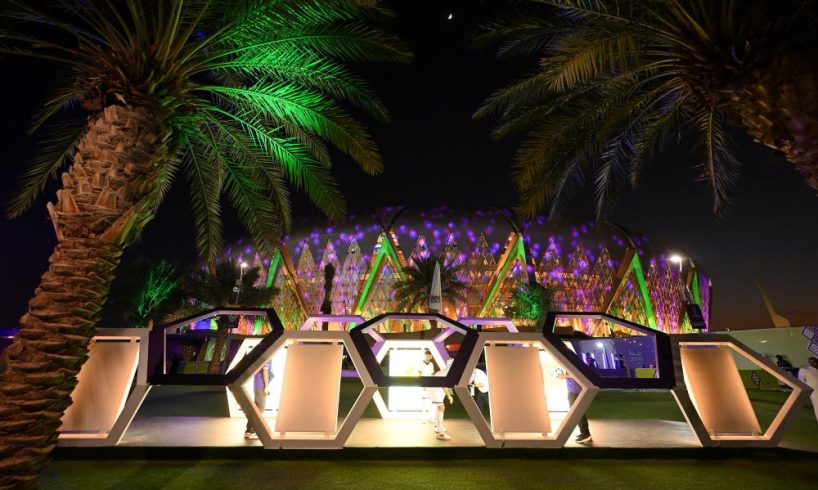
Photograph: Tullio Puglia/FIFA/Getty Images
There was a misguided sense of inevitability when Karim Benzema prepared to take a penalty as the first half of Al-Ittihad’s Club World Cup quarter-final against Al-Ahly wound down. Presumably Benzema would conform to type and level the score; after that the expensively assembled local side, supported by a deafening mass of yellow-clad ultras, could be expected to pull clear and move closer to a dream final with Manchester City.
It turns out things are not always that straightforward. Benzema’s poor effort was parried by Mohamed El Shenawy; Al-Ahly went on to win 3-1 on Friday evening and, by full time, most of the home support had left. An hour later, N’Golo Kanté and Fabinho trudged dejectedly on to the bus, offering a reminder that you cannot always microwave seamless cohesion into a group of superstar imports. Anyone wondering if they had been watching a fast-tracking of Saudi Pro League arrivistes to the verge of global domination was obliged to discard their tinfoil hat.
Related: Liverpool miss out on 2025 Club World Cup spot and potential £50m windfall
The expectation is that City, assuming they shake off their domestic malaise and beat Urawa Red Diamonds in the semi-final on Tuesday, will become the competition’s 11th successive European winner. Much of the subtext around this month’s event, though, has involved the shifting of power elsewhere.
It is no coincidence that, during Al-Ahly’s commanding victory, the VIP box inside the King Abdullah International Stadium was healthily stocked with western businesspeople. Saudi Arabia is on show, both as a football destination and as an investment for those entranced by the dizzying construction projects springing up around the country. It will, despite the charade of caution from those organising, host the World Cup in 2034. However one perceives the Saudi government’s rapacious appropriation of top-level sport, everything made visible here presages football’s future form.
That was all the more true as the Fifa Council, the governing body’s main decision-making body, spilled out into the foyer of the Ritz-Carlton hotel on Sunday afternoon. They had just agreed the dates of this tournament’s hugely expanded 32-team successor: a month‑long jamboree of which the first iteration will take place in the US a year and a half from now and that will, undoubtedly, be contested on Saudi shores soon enough.
In a significant way, the seven‑team event that City enter at the halfway stage signals the end of an era. The World Club Cup and its predecessor, the Intercontinental Cup, have rarely garnered obsessive attention in Europe: the casual fan in England is more likely to remember the horrified reaction in 2000, when Manchester United pulled out of the FA Cup to compete, than the opponents Liverpool and Chelsea played when winning two of the past five finals. Europe has dominated while paying perfunctory respects. But the tournament’s status is about to rocket: going through the motions over four summer weeks will hardly be an option.
Players’ unions slammed the expansion; players themselves, given no say and burdened with near-impossible workloads, are known to view it dimly. Their employers feel differently, a fact shown in an effusive response from the European Club Association that hailed “fantastic news for club football in general”.
Related: Saudi Arabia confirmed as sole bidder for 2034 men’s World Cup
For all the conjecture around Saudi Pro League clubs being invited to join the Champions League, that has never been a serious discussion. It did not need to be when a solution appeared that, provided a Saudi team qualifies in one of Asia’s four berths, guaranteed meaningful football against 12 of Europe’s best. Existing continental structures have been left intact.
Meanwhile Jeddah, a sprawling port city that is still calibrating towards the external gaze, welcomes a pared-down section of the world. The New Zealand side Auckland FC and, from Mexico, Club León have already flown home. Al-Ahly’s large, red, boisterous contingent from across the Red Sea are relied upon to bring the atmosphere now Al‑Ittihad sit out (even if that support is confined to the third-place playoff after Al-Ahly’s 2-0 semi-final defeat by Fluminense). City’s sparse support, meanwhile, will mainly consist of internationally based fans, even if an intrepid core have journeyed from Manchester aiming to witness history.
Spaces to congregate in public are limited, although small fan parks have been created close to the marina and in Al-Balad, the old town. The buildings in Al-Balad’s atmospheric warren of streets are largely contained behind fences erected by Saudi Arabia’s ministry of culture; most of them are beautiful but many are crumbling and an extensive renovation project is under way. The Guardian witnessed one patently unstable structure being destroyed by diggers while nearby shopkeepers went about their business on Sunday lunchtime. The clear intention is that, by 2034, everything looks different.
Perhaps Saudi’s elite will be competing with City on merit by then, notwithstanding penalty spot aberrations. For now there seems little serious opposition to Pep Guardiola’s side. But that would not shake the impression, given quite deliberately throughout the past week, of a nexus shifting.






